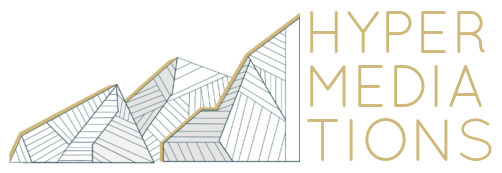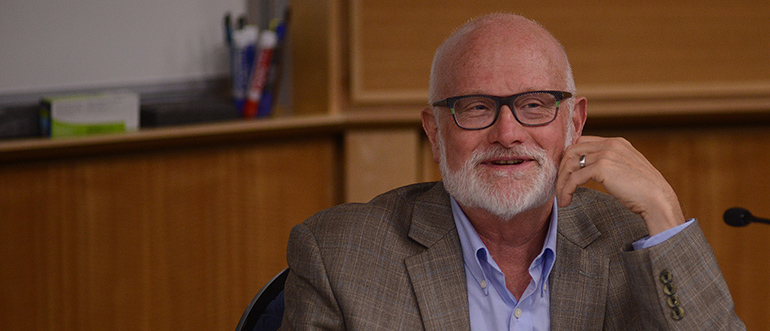How would you describe your scholarly background?
Early in my career, I saw the field of media and religion as important. But the consensus in that era was that society was becoming more secular. People didn’t take religion seriously, and that was really evident in the fields of media studies and communications. I saw a need to use the theories and methods in those fields to look at the question of religion in relation to media. And that grew out of an interest I always had in religion’s institutions and structures, as well as in how religions change in contemporary life. My father was a minister and I lived in a household where religion was the “family business.” But in the fields that were my intellectual home, there was no substantive, theoretically based work.
I started out being interested in media audiences and in how media are used by various groups and communities in the United States, and also internationally. I did quite a bit of work in the Caribbean in the 1980s. Then I shifted my focus to televangelism, which received most people’s attention in terms of the workings of religion and media. It was the new thing at the time, and there was a moral panic about whether or not it was replacing religion or religion would be harmed by it. However, it was aligning with religion, but also looked to be transforming it. And we needed to understand how people make meaning out of the media they were consuming from an audience perspective. I then shifted to how American families’ values and beliefs—both religious and non-religious—are shaped by their media behaviors in light of a moral critique of media as being too secular, too sexual, or too violent. And I wanted to see what people actually did and how they used media.
More recently, I am exploring what kind of impact media have on religion and how religions have been changed by interactions with media. Some outcomes of this interest are my book on religious authority and a book I co-authored with Curtis Coats based on qualitative audience research looking a religion, media, and masculinity.
How would you describe the relationship between religion and media?
I think we are still figuring that one out. Is it media using religion or religion using media? Or is it somehow true that media are coming to do things that religion used to do? Is media the source of religious symbols, ideas, ritual, and values at the expense of conventional religion? We cannot have definitive answers. What is clear is that the media age has substantially changed the terms for religion. Religion can’t control its own symbols anymore. Religions can’t describe a bright line between the religious spheres “inside” and secular spheres “outside.” What religions used to do in terms of symbol generation or in terms of new ways of seeing the world or new ways of seeing transcendence—much of that now happens in the secular media market place.
What are the challenges and potentialities of public scholarship?
The biggest challenge for me as a scholar of media and religion is for people to understand how those two spheres interact. You can’t understand contemporary religion without understanding its mediation. Both are interconnected in really deep and fundamental ways. Mediation happens in all religions through language, dance, sculpture, art, music, and other things. In the contemporary moment, the mediation of religion plays such a big part in creating networks of affinity for people who believe the same things. All of this happens in an interactive way between what we perceived as separate spheres of religion and media.
That argument is not obvious to people until you describe it. It is a challenge for me to see how my scholarship can help people understand contemporary religion. I would like to see scholarship leading to religious and interreligious dialogue and understanding which would help people understand how the world works. I would like them to understand religion in a way that does not make it frightening or fearsome or intimidating or something that leads to struggle and conflict.
But there are other challenges to public scholarship. We are working in the era of religion being controversial, especially since religion is deeply connected with politics. We are living in a time when scholarship is circulated through social media in a place where it was never available before, raising the questions of where scholarship is showing, who cares about it, and why and how it matters. And scholars today more and more have to tell people that what they know is wrong or that there is more to know. And all of this can be threatening to people.
You have been talking about the “mediation of religion.” Can you say more about what that means?
A classic definition of mediation is a channel or a means through which something is made accessible or through which individuals come in contact with religion. So, language is a way that religion is mediated. It is a medium through which religious truths, doctrines, or histories are communicated. Ritual itself is a mediation of religion as it is a way that people participate in religion. In many religions, visual culture is a big part of the mediation of religion, such as the Orthodox traditions, Hinduism, and Buddhism.
What is your current project of public scholarship and what are your goals?
One goal is to bring new insights into contemporary understanding of religions and of politics. I am specifically interested in neo-populist politics and the ethno-nationalist politics of President Trump and right-wing movements in Europe. Specifically, I am looking at the deep connections between evangelicalism and Trump’s politics through the lens of the mediation of Protestantism. Protestantism, in its early stages in the United States, has always been communicational movement. Martin Luther was a very progressive circulator of print media. If Twitter had existed, he would have been a tweeter.
So, Protestant understandings of communication media have become determinative of the media establishment of the United States and the way in which our commercial media developed. The Protestant project wanted to find its way into the center of American culture, as seen in its control of public institutions in the 1950s. Protestantism succeeded and turned its values of individualism, discipline, and sobriety into standard American values. Yet many Protestants were not satisfied with playing an implicit role. They advocated what they called Christian values to control the public sphere. And they are big supporters of the Trump administration because President Trump very much articulates that vision for them.
But my main goal is to educate commentators and bloggers, among others, and to help them reach a more sophisticated understand of how media are involved in contemporary religion. I want to reach those who are already thinking about and commenting on religion. Furthermore, I intend to keep blogging about contemporary issues or movements. One example is my interest in a parallel development to the Trump/evangelical connection, the connection between President Putin and the Russian Orthodox Church. That is something that is not widely known, and I will try to change that.
Interview by Susanne Stadlbauer

